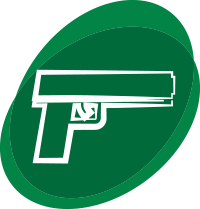Recent advances in microscopy have made it possible to collect 3D topographic data, enabling more precise virtual comparisons based on the collected 3D data as a supplement to traditional comparison microscopy and 2D photography. Automatic comparison algorithms have been introduced for various scenarios, such as matching cartridge cases[1],[2] or matching bullet striae[3],[4],[5]. One key aspect of validating these automatic comparison algorithms is to evaluate the performance of the algorithm on external tests, that is, using data which were not used to train the algorithm. Here, we present a discussion of the performance of the matching algorithm[6] in three studies conducted using different Ruger weapons. We consider the performance of three scoring measures: random forest score, cross correlation, and consecutive matching striae (CMS) at the land-to-land level and, using Sequential Average Maxima scores, also at the bullet-to bullet level. Cross correlation and random forest scores both result in perfect discrimination of same-source and different-source bullets. At the land-to-land level, discrimination for both cross correlation and random forest scores (based on area under the curve, AUC) is excellent (≥0.90).
Comparison of three similarity scores for bullet LEA matching

Journal: Forensic Science International
Published: 2020
Primary Author: Susan VanderPlas
Secondary Authors: Melissa Nally, Tyler Klep, Cristina Cadevall, Heike Hofmann
Type: Publication
Research Area: Firearms and Toolmarks
Related Resources
Forensic Toolmark Comparisons
Forensic practitioners determine whether two marks were generated by the same tool by observing the 2D images of the marks using a comparison microscope and deciding whether the “surface contours…
Effect of Subclass Characteristics on Congruent Matching Cells (CMC) Algorithm
This presentation is a continuation of subclass characteristics present on consecutively manufactured breech face inserts. The objective is to assess manufacturing methods similar to those used by firearm manufacturers. It…
Diagnostic Tools for Automatic Cartridge Case Comparisons
The following was presented at the Association of Firearm and Tool Mark Examiners (AFTE) 2023, Austin, Texas, May 21-26, 2023. Copyright 2023, The Authors. Posted with permission of CSAFE.
A Study in Reproducibility: The Congruent Matching Cells Algorithm and cmcR Package
Scientific research is driven by our ability to use methods, procedures, and materials from previous studies and further research by adding to it. As the need for computationally-intensive methods to…
